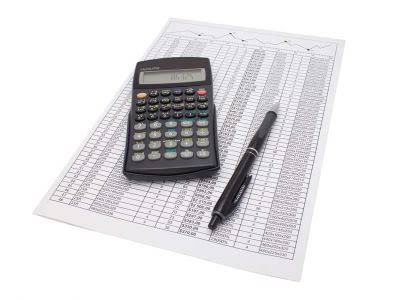
This method provides a more realistic payback period by considering the diminished value of future cash flows. It’s important to note that not all investments will create the same amount of increased cash flow each year. For instance, if an asset is purchased mid-year, during the first year, your cash flow would be half of what it would be in subsequent years. When that’s the case, each year would need to be considered separately. Jim estimates that the new buffing wheel will save 10 labor hours a week.
Example 1: Even Cash Flows

Here, future cash inflows are discounted using a particular rate, reflecting their present value. Take an example where a project requires an initial investment of $150,000. In its first three simple payback formula years, the project is expected to return net cash of $10,000, $25,000, and $50,000. Calculating your payback period can be helpful in the decision-making process.
- The opposite stands for investments with longer payback periods – they’re less useful and less likely to be undertaken.
- We explain its formula, how to calculate, example, advantages, disadvantages & differences with ROI.
- Payback period can be defined as period of time required to recover its initial cost and expenses and cost of investment done for project to reach at time where there is no loss no profit i.e. breakeven point.
- Using the new machine is expected to produce an additional $150,000 in cash flow each year that it’s in use.
How to Calculate the Payback Period

For example, the payback period on a home improvement project can be decades while the payback period on a construction project may be five years or less. For example, a project cost is $ 20,000, and annual cash flows are uniform at $4,000 per annum, and the life of the asset acquire is 5 years, then the payback period reciprocal will be as follows. A common error made by students is the assumption that discounted cash flow takes into account the effects of inflation on investment decisions. To account for inflation, the discount rate used in the NPV calculation should be adjusted to reflect the expected inflation rate.

An Introduction to Investment Appraisal
- First, it ignores the time value of money, which is a critical component of capital budgeting.
- The total cash flows over the five-year period are projected to be $2,000,000, which is an average of $400,000 per year.
- A project costs $2Mn and yields a profit of $30,000 after depreciation of 10% (straight line) but before tax of 30%.
- We’ll explain what the payback period is and provide you with the formula for calculating it.
Therefore, the payback period for this project is 5 years, which means that it will take 5 years to recover the initial $100,000 investment from the annual cash inflows of $20,000. Payback period is a fundamental investment appraisal technique in corporate financial management. It is a measure of how long it takes for a company to recover its initial investment in a project. It is one of the simplest capital budgeting techniques and, for this reason, is commonly used to evaluate and compare capital projects. The payback https://www.bookstime.com/compare-bookkeeping-solutions period can apply to personal investments such as solar panels or property maintenance, or investments in equipment or other assets that a company might consider acquiring. Often an investment that requires a large amount of capital upfront generates steady or increasing returns over time, although there is also some risk that the returns won’t turn out as hoped or predicted.
Payback Period: Definition, Formula, and Calculation
It may be the deciding factor in whether you should go ahead with the purchase of that big-ticket asset, or hold off until your cash flow is better. Small businesses in particular can benefit from payback analysis simply by calculating the payback period of any investment they’re considering. Similar to a break-even analysis, the payback period is an important metric, particularly for small business owners who may not have the cash flow available to tie funds up for several years. Using the payback method before purchasing an expensive asset gives business owners the information they need to make the right decision for their business. As the equation above shows, the payback period calculation is a simple one.

Payback Period Example
So, if an investment of $200 has an annual return of $100, the ROI will be 50%, whereas the payback period will be 2 years ($200/$100). As you can see, using this payback period calculator you a percentage as an answer. Multiply this percentage by 365 and you will arrive at the number of https://www.instagram.com/bookstime_inc days it will take for the project or investment to earn enough cash to pay for itself. If earnings will continue to increase, a longer payback period might be acceptable. If earnings might decrease after a certain number of years, the investment may not be a good idea even if it breaks even quickly. On the other hand, an investment with a short lifespan could need replacement shortly after its payback period, making it a potentially poor investment.
Payback Period Vs Return On Investment(ROI)

The discounted payback period is often used to better account for some of the shortcomings, such as using the present value of future cash flows. For this reason, the simple payback period may be favorable, while the discounted payback period might indicate an unfavorable investment. The breakeven point is the price or value that an investment or project must rise to cover the initial costs or outlay. The payback period refers to how long it takes to reach that breakeven.
- Prior to calculating the payback period of a particular investment, one might consider what their maximum payback period would be to move forward with the investment.
- In most cases, a longer payback period also means a less lucrative investment as well.
- Shaun Conrad is a Certified Public Accountant and CPA exam expert with a passion for teaching.
- In this guide, we’ll be covering what the payback period is, what are the pros and cons of the method, and how you can calculate it, with concrete business examples.
When Would You Use The Payback Period?
She has worked in multiple cities covering breaking news, politics, education, and more. Both the above are financial metrics used for analysis and evaluation of projects and investment opportunities. Thus, the above are some benefits and limitations of the concept of payback period in excel. It is important for players in the financial market to understand them clearly so that they can be used appropriately as and when required and get the benefit of it to the maximum possible extent. In this guide, we’ll be covering what the payback period is, what are the pros and cons of the method, and how you can calculate it, with concrete business examples. My Accounting Course is a world-class educational resource developed by experts to simplify accounting, finance, & investment analysis topics, so students and professionals can learn and propel their careers.
How Do I Calculate a Discounted Payback Period in Excel?
It’s obvious that he should choose the 40-week investment because after he earns his money back from the buffer, he can reinvest it in the sand blaster. Since some business projects don’t last an entire year and others are ongoing, you can supplement this equation for any income period. For example, you could use monthly, semi annual, or even two-year cash inflow periods. The cash inflows should be consistent with the length of the investment. Knowing the payback period is helpful if there’s a risk of a project ending in the future.

Comentarios recientes